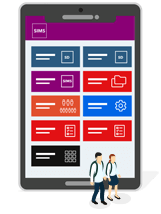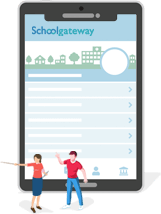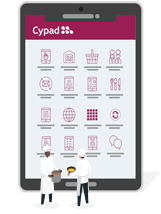IDL’s roots can be traced back to 1980 when educators worked with the Starcross Educational Research Association to build a solution that could help young learners. It was only in 2012 when a programme called “Lifting Barriers”, which was funded by the Big Lottery, allowed IDL to be developed for use within a school environment in conjunction with the SENCO leaders.
IDL’s mission was to enable learning through innovative educational initiatives and solutions that would increase the reading and spelling ages of young learners with learning difficulties and boost their self-esteem and confidence as well.
To test this, IDL was placed in 120 primary and secondary schools across the North-West over a period of three years between 2011 and 2014. The results showed that there was an average increase in reading and spelling ages of 11 months after only 26 hours of use.
Multi-Sensory Educational Tools
These specialist multi-sensory software solutions allow learners to engage multiple senses at once to aid engagement and understanding and help them make connections with new concepts in more than one way. This type of learning can prove to be especially effective and helpful when it comes to improving numeracy and literacy. For example, it can involve activities like visualising number operations with coloured blocks or practicing typing in high-frequency and rhyming words.
 To understand how IDL can help support the growing number of young people falling through the gaps of Literacy and Numeracy, let’s first dive deep into these learning challenges faced by pupils.
To understand how IDL can help support the growing number of young people falling through the gaps of Literacy and Numeracy, let’s first dive deep into these learning challenges faced by pupils.
Dyslexia Learning Software
According to The British Dyslexia Association (BDA), dyslexia can be explained as a genetic difference in an individual’s ability to learn and process information. Currently estimated, 1 in 10 people in the UK are affected by this learning difficulty. Despite being one of the most common learning difficulties that people struggle with, over 6 million people in the UK have dyslexia but may have not received a diagnosis.
As a result, many people struggling with dyslexia may be unaware of how to navigate the challenges in learning they are facing. Each person’s experience with dyslexia is unique, ranging from mild to severe and even co-existing with other learning difficulties. Statistically, every one in three children in a classroom is struggling with some form of learning difficulty.
 Once a child’s areas of improvement are identified and assessed, schools and parents can introduce effective instructions where a child’s access to print is optimised. The earlier the intervention is conducted, the greater the chances that the child will be able to manage their difficulty as remediation is demonstrably less effective.
Once a child’s areas of improvement are identified and assessed, schools and parents can introduce effective instructions where a child’s access to print is optimised. The earlier the intervention is conducted, the greater the chances that the child will be able to manage their difficulty as remediation is demonstrably less effective.
Dyslexia Reading Support in Schools
To enhance reading ability, which is an acquired skill, you must allow the brain to learn about the relationship between what words look like and what words sound like. This is where multi-sensory learning comes in, this type of teaching helps create links between the visual, auditory, and tactile pathways.
IDL Literacy Software is demonstrated to raise reading and spelling ages in both primary and secondary school pupils. For these students, the software represents the missing link in their literacy progress.
The Literacy software includes all parts of a complete literacy plan and is structured yet flexible enough to accommodate individual differences. In addition to addressing the reading process from phonological awareness to fluency, the software offers features that help with spelling, handwriting, vocabulary, and comprehension. Learn more about IDL’s Literacy programme here.
Dyscalculia Support for Students
Dyscalculia is a specific and persistent difficulty in understanding numbers which can lead to a diverse range of difficulties with mathematics. It is expected that dyscalculia’s study and knowledge falls behind dyslexia by around 30 years. In fact, until recently, dyscalculia was thought to be an umbrella term for all Mathematics learning difficulties.

In fact, 60% of individuals with dyslexia will have difficulties with Mathematics. As with dyslexia, early diagnosis and the design of intervention programs adapted to the needs of each case are essential for ensuring that the academic performance and Math-related aspects of students’ daily lives is not impacted. So, what are the signs that we should look out for when it comes to dyscalculia?
Signs of Dyscalculia
A young learner may face difficulties in counting numbers, struggle to connect numbers with their corresponding words, and may need visual aids (like fingers) to count. As pupils advance from the primary to the secondary level of the curriculum, they may have significant difficulties in learning basic arithmetic operations like addition and subtraction. They would even find it challenging to grasp concepts behind word problems and process visual-spatial ideas like graphs and charts.
The challenges for a learner with dyscalculia do not just end at school. A young learner may also find it difficult to remember pin codes and phone numbers, or struggle with money matters such as splitting the bill, etc. The most obvious indicator of a specific learning issue is a significant disparity between ability and aptitude. A child with dyscalculia may excel in other courses, such as English or History, yet perform poorly in Mathematics and Math-related topics.
Numeracy Learning Solutions
IDL’s Numeracy software is designed to match individual targets set out in the National Curriculum while also promoting a general awareness of Mathematical methods.
 Additionally, it can be used for teacher training and planning, and has proven to be of great assistance to school psychologists and educational specialists. The software contains a wide range of numeracy resources that are interactive and fun.
Additionally, it can be used for teacher training and planning, and has proven to be of great assistance to school psychologists and educational specialists. The software contains a wide range of numeracy resources that are interactive and fun.
The curriculum is designed to provide support to learners and monitor their progress. There are eleven distinct strands in the program, each individually tracking a pupil’s ability in those principles. A student’s progress can be tracked at different levels on multiple strands of understanding levels – making it easier to isolate areas of difficulty and target interventions. Learn more about IDL’s Numeracy programme here.
Why Choose IDL for Dyslexia and Dyscalculia Support?
In recent years, IDL’s Literacy and Numeracy curriculums have evolved significantly, transitioning from a one-on-one learning paradigm to a multi-sensory independent learning curriculum.
This improvement has significantly increased the reach and utility of IDL, with the number of learners using the intervention increasing year after year. This increased reach and usability of IDL is backed by study findings and research that have been conducted on the effectiveness of the IDL Literacy and IDL Numeracy courses.
IDL Literacy Effectiveness Review
The earliest study done by Richard Scrase in 2002, on 150 learners of the IDL programme, found the average improvement rates in reading and spelling by a factor of 4 times. A significantly larger project, Lifting Barriers, in 2014 included around 1200 students. The study discovered that IDL delivers considerably faster reading and spelling improvements than non-specialist teaching techniques, with an average 10-month increase in reading and 11-month improvement in spelling after only 26 hours on the IDL programme.
 Another crucial conclusion is that 1 new lesson should be adopted every 6 days to maximise spelling progress and every 8 days to maximise reading improvements. This verifies IDL’s recommendation that each student devote one hour every week to the programme.
Another crucial conclusion is that 1 new lesson should be adopted every 6 days to maximise spelling progress and every 8 days to maximise reading improvements. This verifies IDL’s recommendation that each student devote one hour every week to the programme.
According to the findings, Key Stage 2 students improved the most in spelling, while Key Stage 3 students improved the most in reading during the training. The 2018 Lancaster University study demonstrates the adaptability and resilience of the IDL Intervention. The research reveals that recent adjustments and updates to the curriculum have been beneficial, and IDL Literacy remains a tried-and-true method for boosting learners’ reading and spelling skills.
IDL Numeracy Effectiveness Review
IDL collaborated with the Pupil and School Support service to conduct a pilot with primary and secondary schools in Birmingham to test IDL numeracy. This was for ten weeks, with an emphasis on number, place value, addition, and subtraction.
Schools chose students who had identified Special Educational Needs (SEN) or who were thought to benefit from a specific Mathematics intervention. The pilot programme involved 14 schools from Birmingham between April and July 2019.
The testing of IDL Numeracy in Birmingham’s primary and secondary schools was constructive and promising. Given that students could only use the programme for 10 weeks, the number of students who showed fast development was substantial, especially when compared to the Number and Place Value Thread.
 Learn more about how IDL can help young learners at your school by getting in touch with us today.
Learn more about how IDL can help young learners at your school by getting in touch with us today.





